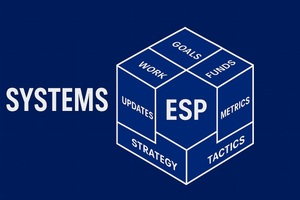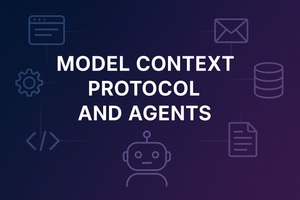Treating data as a revenue-generating asset, not a technical byproduct, is the next leap in enterprise system design.
The Shift: Data Isn't Just Fuel, It's Currency
In the last decade, companies have spent billions collecting and storing data, yet only a fraction turns into business outcomes. That gap isn't about tools - it's about strategy.
The CFO of tomorrow isn't just asking, "How much did we spend on data engineering?" They ask, "Where is data creating lift, retention, or revenue?"
This mindset shift requires system designers and developers to think differently about architecture. Platforms must be planned around:
- Data flow agility
- Cross-functional visibility
- Business-line feedback loops
And it starts by challenging one of the most outdated paradigms: OLTP vs. OLAP.
Read Simplexity: 10 System Design Lessons for how micro-decisions in architecture shape macro outcomes.
Why OLTP vs. OLAP is Breaking
Timescale's lakehouse breakdown shows how the traditional separation of transactional (OLTP) and analytical (OLAP) systems leads to latency, reporting delays, data duplication, and tangled consumption patterns across teams, increasing complexity and decreasing scalability.
Meanwhile, modern use cases - like fraud detection, personalization, or marketing automation - need real-time insights triggered by real-time events. You can't wait for ETL to land in a warehouse to act.
Lakehouse architectures (like Databricks LakeBase, Snowflake) blend these paradigms to support speed, flexibility, and scale.

Breaking the OLTP/OLAP wall is about speed for a purpose: turning insights into immediate action and thus business value. This is where the Reverse ETL and Activation come in.
Beyond Classic ETL: Reverse to Activation
We've all heard the death knell of classic ETL. But what's emerging isn't just real-time ingestion - it's activation.
LXA Hub explains how reverse ETL powers this shift, pushing modeled data from your warehouse into CRM systems like Salesforce, Advertisement Platforms, or MAP engines like Oracle Eloqua.
This turns your warehouse into a source of truth for execution, not just reporting. It elevates the importance of:
- Versioned data models
- Identity resolution
- Deployment pipelines for features, not just dashboards
Companies like Netflix, Shopify, and DoorDash have adopted similar activation-first architectures, where operational data flows are activated in real-time to personalize experiences, coordinate marketing triggers, or manage product feature flags. These systems aren't just internal efficiencies - they're revenue multipliers.
This mirrors the broader shift in data strategy: away from passive reporting warehouses and toward executional platforms, where data fuels decisions, automation, and revenue in real time.
As Vince Jeffs notes, insight should serve strategic action, not static dashboards.
She explains Reverse ETL, how it works, and why it's reshaping how modern teams push insights into CRMs, ad platforms, and marketing automation systems.
It reinforces the core idea: warehouses aren’t just for reporting anymore - they’re execution layers for growth.
Embedding Business Feedback Loops for Directional Intelligence
If you're designing systems:
- Can campaign managers trace outcomes to versions?
- Can CX teams adjust flows based on new churn signals?
- Can finance validate how activation lifted revenue?
This feedback loop must be engineered into the system, not treated as a post-hoc KPI report.
CFOs need traceable value, so the system architecture should enable:
- Campaign managers to see which model version lifted conversions.
- Finance to evaluate ROI: "If we invested $X in feature Y, what was the lift?"
Eide Bailly emphasizes that CFOs use these loops to tie tech investments directly to outcomes.
Architecting for CFO Visibility
Most data stacks focus on the "how." But CFOs care about the "why" and "what did we get?"
A CFO-centric system design includes:
- Cost lineage: How much does it cost to serve each insight?
- Usage telemetry: Which data assets drive decisions vs. sit idle?
- Attribution tags: Linking model or pipeline outputs to business events
FinOps is making data auditable as capital, not just an expense line.
This model also complements emerging approaches like data mesh and data contracts, where ownership, observability, and product thinking are embedded directly into how data assets are delivered and consumed across teams.
System design isn’t just about load - it’s about strategic leverage.
When developers think in terms of:
- Revenue-driving feedback loops
- Identity-safe activation
- Cost attribution metadata
…they transform from pipeline builders into value architects.
An article highlighting the CFO's increasing scrutiny of tech spending and ROI notes that assessing tech ROI is a top friction point between CFOs and CIOs, but also that this tension, when resolved through collaboration, ensures investments drive value.
Final Thought: Build for Leverage, Not Just Load
When developers consider revenue-driving feedback loops, identity-safe activation, and cost attribution, they transform from pipeline builders to value architects.
That kind of engineering earns a seat at the table, not just a ticket in the backlog.
Tools like Hightouch, Census, and RudderStack have accelerated the adoption of Reverse ETL pipelines by enabling teams to sync warehouse-modeled data into CRMs, MAPs, and ad platforms with governance in mind.



